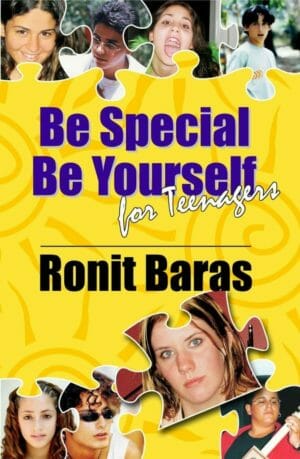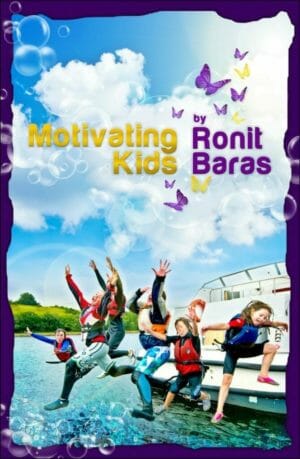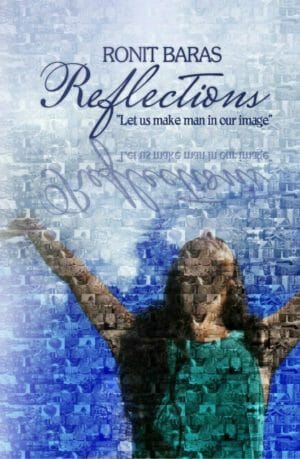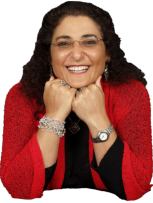
Join Ronit Baras and her team in “Challenging Teachers’ Cultural Thinking”, a dynamic and interactive workshop that unravels the challenges of living with diversity. And learn powerful strategies for dealing with personal, cultural, political and social conflict successfully and effectively.
Teaching peace and overcoming assumptions through reflective teaching
 “Educators hold the key to living together in peace and harmony” is the philosophy of the diversity educator and cross-cultural expert Ronit Baras.
“Educators hold the key to living together in peace and harmony” is the philosophy of the diversity educator and cross-cultural expert Ronit Baras.
Throughout her personal experience as migrant, her inspiring work with thousands of students, parents, teachers and community members, she delivers an inspiring message that “Misconceptions, assumptions and stereotypes are the sources of cultural conflicts and educators hold the key to instil values, beliefs and facilitate the desired social change”
In her unique way, she challenges common perceptions and offers insights into best practice in overcoming conflicts and celebrating diversity. Drawing on experience in presentations, education and leadership Mr. Baras reveals the magic formula for peace and harmony – the do’s and don’ts of effective diversity education, how to address differences of beliefs and culture and the most practical ways to foster a positive experience of diversity.
Over the past 16 years alone, she inspired tens of thousands of students, teachers, parents and community members reflect on their own assumption, make a stand against discrimination and encouraged them to become social change activist.
Please Note: “Challenging Teachers’ Cultural Thinking” workshops are presented by Ronit Baras and her team to represent diversity and challenge participants assumptions based on look. Team members are selected based on availability, name, profession, cultural background or relationship. Information on presenters is not revealed to the participants in order to allow them to examine their own assumptions and biases without prior knowledge of the presenters.
The day’s experience was Fantastic and very engaging. It challenged my perceptions of other people and encouraged me to see beneath surface level characteristics, e.g. appearance. I learned to love others by seeing similarities as well as dissimilarities. It gave me practical ways to apply what we learnt. I was amazed to see people of different religious and cultural backgrounds can work together peacefully. Ronit and Ahmad were very engaging and approachable, open and informative.
Marie W, University of QLD, “Religion, Peace and Violence”
What is in the Challenging Teachers’ Cultural Thinking workshop?
- Box and discussing assumptions
- Using stories to address sensitive topics
 Guessing game
Guessing game- Diversity – Statistics in Australia
- The importance of teachers self reflection
- Do’s & Don’t of diversity education
- The art of empathy
- Building communities – Building game
- Global perspective and Making a difference
- Story Telling guide
- Reflection object game
I liked the discussion of variety of ideas about prejudice and misconceptions existing in our society. I was beneficial in getting more ideas and strategies to make student think globally. It was eye opening regarding students’ thinking. Presenters were well prepared and full of personal experience.
D.L. High School Teacher, Townsville, Professional Development for Teachers
Objectives
- To help educators recognise the need to challenge ways of thinking about diversity and challenge their own assumptions and cultural thinking in both personal and educational contexts and promote reflective practice.
- To empower educators to effectively communicate and interact with children, families and colleagues from cross cultures and seek to promote children’s cultural competence by becoming role models and social change activist.
- To provide educators with knowledge of different culture practices and promote respect to diversity.
- To expose educators to evidence based research to promote understanding, appreciation and respect to differences and help children strengthen their sense of identity and belonging, their communication across cultures and support their social and emotional wellbeing.
- To provide educators practical with ideas for challenging children’s cultural thinking, develop children’s skills and communication representing respect and facilitate positive experience of diversity.
Today was excellent. Presenters were fantastic, very interesting and open minded. I have gained Knowledge & Skills of how to spread awareness about these issues within my community.
Ala Al-Mahaidi, United Nations Event
Teaching peace and overcoming assumptions through reflective teaching
Education is the most powerful weapon which you can use to change the world.
Nelson Mandela
As teachers, we like to think of ourselves as very open-minded. We model this attitude and believe that open-minded teachers can raise open-minded students and when the mind is open, the possibilities are endless. Together with our students’ parents, we are the most important social agents in our society. Our best tool is to believe and be true to what we want to create. If we want to raise a whole generation of open-minded kids that accept and appreciate diversity, we must first be living proof of what we want to teach and be able to ‘walk the talk’.
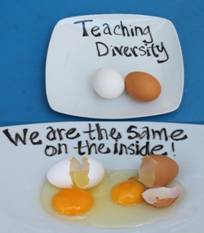 The first time I questioned my own open-mindedness was long before I became a teacher. I was 16 years old, and Israel and Egypt signed their famous peace contract. To start the official ‘relationship’ between the two countries, it was decided to send selected youth from both sides to meet each other. As a very ‘open-minded’ teen, I was chosen to be part of this unique delegation.
The first time I questioned my own open-mindedness was long before I became a teacher. I was 16 years old, and Israel and Egypt signed their famous peace contract. To start the official ‘relationship’ between the two countries, it was decided to send selected youth from both sides to meet each other. As a very ‘open-minded’ teen, I was chosen to be part of this unique delegation.
The Egyptian teens came to visit us in Israel. We had a great time together and one evening, the Israeli teens decided to visit the Egyptian teens in their room to see what they were doing. We knocked on the door and they were very happy to see us. They welcomed us in and we sat in one of the rooms and just watched them. We were completely shocked.
Why shocked? you might ask.
Because they acted like… teens. Same as us. They were listening to the same music we were listening to, their boys ‘hit on girls’, just like ours did, and their girls responded in exactly the same coy way as ours did. I vividly remember the question that popped into my head ‘What were you expecting?’
Our environment, the world in which we live and work, is a mirror of our attitudes and expectations.
Earl Nightingale
Every Egyptian child has a mum and a dad
Back then, I didn’t think I was expecting anything. I thought I was open-minded and that was why they chose me for this delegation. After this experience, I realised I wasn’t as open-minded as I thought. Before I met them, the ‘Egyptian’ label cluttered my perception of them to the point that I ignored similarities we had as ‘teens’.
 Following their visit, we went to visit them in Egypt. We had an opportunity to spend time with the Egyptian teens and their families. During the visit, I questioned many of my perceptions of the ‘Egyptian enemy’. I realised they were not enemies. They were people, mums and dads who wanted the same thing my mum and dad wanted: to raise happy and healthy kids, go to work in peace and come back to their families safely. My mind changed for the better about the idea of the ‘other’.
Following their visit, we went to visit them in Egypt. We had an opportunity to spend time with the Egyptian teens and their families. During the visit, I questioned many of my perceptions of the ‘Egyptian enemy’. I realised they were not enemies. They were people, mums and dads who wanted the same thing my mum and dad wanted: to raise happy and healthy kids, go to work in peace and come back to their families safely. My mind changed for the better about the idea of the ‘other’.
There is a great quote by Oliver Wendell Holmes: ‘One’s mind, once stretched by a new idea, never regains its original dimension.’ Though I didn’t know the quote at the age of 16, I totally understood the idea that once the mind shifts, the change is irreversible. Once they occur to us, there are some ideas we can no longer pretend never to have had.
I realised open-mindedness was not just trying different things. It was questioning our thoughts and having the courage to be vulnerable, allowing new and challenging beliefs that threaten our sense of identity to circle in our mind. It was at this point that I realised peace is not an idea. It does not require a political statement or a signed contract to be successful. It requires a shift in the mind through personal experience. It requires our education to stretch and adapt to allow us opportunities to experience the ‘other’.
The training day was awesome. I liked learning about perception of people and how different it is from reality. It gave me confidence and techniques in changing perception of the people around us. The presenters were very effective and very professional in delivery the material.
Great day! Thank you!
Agustino Lako, QLD Police, Professional Development
This reflective experience with the Egyptian teens was so strong and meaningful for me that I carried it with me through my special education degree and, later on, to my teaching and life coaching profession. I always keep in mind the power of perception and the importance of keeping an open mind.
Throughout my education studies, I had the honour to be mentored by some amazing and inspiring teachers who proved to me that every teacher’s assumptions/perceptions influence the outcomes of their teaching. We make judgments based on partial information and delete or distort what is in front of us to match our original perception. We all do it. People do it, teachers do it and students do the same.
What the teacher is, is more important than what he [or she] teaches.
Karl Menninger
Pygmalion effect
Much research had been done on the impact of expectation on education, health and even justice. Expectation plays a huge role in the way we manage learning, our health and our relationships. Take the placebo effect, for example. Our expectation from a drug is so high, that, for medication to be approved, it has to be shown to be slightly more effective than the placebo. People believe that the tablet will cure them, and it cures them, even if they get a sugar pill.
 While in medicine it is called the placebo effect, in other areas it is called the Pygmalion effect or Rosenthal effect. The Pygmalion effect is named after the Greek myth of Pygmalion who was a sculptor. Pygmalion fell in love with a statue he had carved and Aphrodite turned his statue into a real woman. It represents beliefs we hold so dear until they become ‘real’.
While in medicine it is called the placebo effect, in other areas it is called the Pygmalion effect or Rosenthal effect. The Pygmalion effect is named after the Greek myth of Pygmalion who was a sculptor. Pygmalion fell in love with a statue he had carved and Aphrodite turned his statue into a real woman. It represents beliefs we hold so dear until they become ‘real’.
In their famous research, Robert Rosenthal and Lenore Jacobson (1968) examined the effect of teachers’ expectations on a group of students. Teaches were misled to believe some of their students scored high on an IQ test. Over one year, these students doubled their progress. The interesting thing was that these students were no smarter than the others. They were selected at random to be of ‘higher IQ’. The only difference between these students and all the others was that their teachers believed they were more advanced.
Rosenthal claimed our reality can be positively or negatively influenced by expectations of others by creating the self-fulfilling prophecy. The teachers believed these students to be more advanced, and so continued to notice only those things that supported their belief. Rosenthal focused on the outcome for the student. When I read this, I focused more on the mind shift for the teachers—once their minds were stretched to believe their students were advanced, it could not shrink back to the first belief that they were ‘normal’ students. ‘Normal’ students could never have doubled their progress in one year.
While these teachers’ expectations impacted for the better, some expectations impact for the worse.
Failing the diversity test
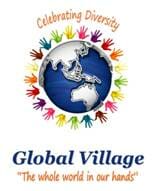 September 11 (2001) was a big event in recent history. It forced countries around the world, including Australia, to sit for what I like to call, ‘the diversity test’. It was not an easy test and discrimination and racism surfaced everywhere. In the streets, the media, schools, workplaces. It was no longer possible to hide it from the public. Most countries failed the test. In Australia, much energy and effort was given to improve cultural understanding but not much was invested in schools. There was a great push towards the national curriculum and succeeding in literacy and numeracy tests rather than in the diversity test.
September 11 (2001) was a big event in recent history. It forced countries around the world, including Australia, to sit for what I like to call, ‘the diversity test’. It was not an easy test and discrimination and racism surfaced everywhere. In the streets, the media, schools, workplaces. It was no longer possible to hide it from the public. Most countries failed the test. In Australia, much energy and effort was given to improve cultural understanding but not much was invested in schools. There was a great push towards the national curriculum and succeeding in literacy and numeracy tests rather than in the diversity test.
A child is not a vessel to be filled, but a lamp to be lit.
Hebrew proverb
Through my work around diversity and running many ‘Celebrating Diversity’ programs, I realised that the concept of diversity in Australia is focused on allowing freedom of expression. While this is a positive first step, it emphasises the differences between us rather than the similarities. Celebration of different ethnic groups increased the ‘us and them’ mentality and widens the gap between people.
Most teachers and students I worked with in these programs held many stereotypes, assumptions and misconceptions and even fear from ‘others’ that did not allow harmony to happen. The emphasis was on knowledge of Aboriginal and other ethnic groups or nations but not on our attitudes and beliefs towards them. They had some knowledge about ‘others who are different to me’ but it did not translate to acceptance, collaboration and appreciation of diversity and was definitely far from celebrating it.
Children have never been very good at listening to their elders, but they have never failed to imitate them.
James Baldwin
During my work, I came across ‘Together for Humanity’ a multi-faith, not-for-profit organisation focusing on diversity education in schools. Together for Humanity focused on facilitating a mind shift in attitude towards different ethnic groups by helping students and teachers question assumptions about religion. I joined the organisation and became a state director. A study done by Together for Humanity suggested that children have many misconceptions about ‘others’. Of the thousands of students from years 4 to 12 who we surveyed, most of them had the following beliefs:
- Muslims are dangerous and scary.
- Jewish people are very religious.
- Asians sell drugs.
- Aborigines do not respect women.
Together for Humanity was in the mind-shifting ‘business’. Our goal was to help children question their assumptions. We found this to be very effective in changing their attitudes towards other culture.
 While Together for Humanity mostly focused on assumptions about different religions, I chose in my ‘Celebrating Diversity’ programs to focus on all the aspects of diversity. I believe a holistic approach is needed if we want sustainable results. In a holistic approach, it is important to uncover and shift students’ attitudes towards others who are different to them in many areas such as name, gender, look, race, talents, skills and abilities, social affiliations, languages, faith, place of birth, age, hobbies and so on. According to the Australian national anthem, ‘We are one but we are many.’
While Together for Humanity mostly focused on assumptions about different religions, I chose in my ‘Celebrating Diversity’ programs to focus on all the aspects of diversity. I believe a holistic approach is needed if we want sustainable results. In a holistic approach, it is important to uncover and shift students’ attitudes towards others who are different to them in many areas such as name, gender, look, race, talents, skills and abilities, social affiliations, languages, faith, place of birth, age, hobbies and so on. According to the Australian national anthem, ‘We are one but we are many.’
Despite that, instances of bullying increase and we continue to fail the test of accepting diversity. Failing this test presents a challenge for our desire to live together in harmony in a diverse country.
I believe that in order for this to work and, in fact, to succeed at every test our society is facing, we must invest in all our agents of change: students, parents and teachers. I strongly believe education by teachers is the best way to prepare us for the test, and to help us pass it.
You might be thinking, “Why teachers?” Let’s do the maths. We are limited by time because we want change to happen as fast as possible and as early as possible. So we have to look at our resources and see which one will have the biggest ripple effect. If we work with one student, we can facilitate a mind shift for them, which this student will take with him/her into adulthood. Sure, it will make a difference because they’ll raise much more open-minded children of their own. If we stretch the mind of a parent, we can influence four to five people (the average family size).
But if we make a mind shift in teachers, we can make a difference in the lives of 25 students, every year of teaching.
Teaching is not about what we give our students but about what they choose to take. We spend too much time giving our students and too little time teaching them to take.
Ronit Baras
The science of assumptions
 Malcolm Gladwell (2005), in his book, Blink: The power of thinking without thinking, explained how decisions we make in split seconds based on partial information could be changed if we change our perception, which will change our action and change the outcome. In this book, Gladwell explores the positive, negative or devastating outcome of acting based on partial information: ‘We have, as human beings, a storytelling problem. We’re a bit too quick to come up with explanations for things we don’t really have an explanation for.’
Malcolm Gladwell (2005), in his book, Blink: The power of thinking without thinking, explained how decisions we make in split seconds based on partial information could be changed if we change our perception, which will change our action and change the outcome. In this book, Gladwell explores the positive, negative or devastating outcome of acting based on partial information: ‘We have, as human beings, a storytelling problem. We’re a bit too quick to come up with explanations for things we don’t really have an explanation for.’
Teachers are no different in their storytelling ability. Gladwell claims it is a general, human quality. It is important to remember that stereotyping and assumptions are natural human reactions. It is a way for our brains to filter the overwhelming amount of information we absorb and narrow it down to manageable chunks. People do it, teachers do it and so do students.
If it’s so natural, why should we change it? It is often said that if we keep doing what we have always done, then the same results will occur. We need to be courageous and admit that we failed the diversity test. We need to question our assumptions and beliefs and do things differently.
I would give it 10 out of 10. I loved the honesty, the humility, the humanness, knowledge and humour. It made me realise I do very often judge a book by its cover and the importance of examining our assumptions. Presenters were brilliant. They were engaging, informed and inspirational.
Jennet Mullane, The Benefits and Challenges of Diversity, Gladstone Region Forum
As hard as it is to admit, it is not easy to make this mind shift, and it is no easier for teachers. In my courses on professional development for teachers, working with thousands of teachers, I discovered they had beliefs that did not ‘allow’ this social change to happen. Specifically, I have found the following:
- Many teachers did not see how their own beliefs and assumptions influenced their students. They only considered their verbal statements and expressed discomfort after learning about the Rosenthal effect. They were very focused on the ‘cheating’ aspect of the research rather than their own expectations.
- Teachers considered themselves very open-minded. In their mind, there was nothing to change. As Epictetus said ‘It is impossible for a man to learn what he thinks he already knows’. This belief doesn’t allow progress to happen.
- Most teachers were very much focused on being ‘givers’ of knowledge rather than facilitators of attitude. Their ‘job description’ was limited by the external pressure to perform academically rather than being social agents.
- Teachers had doubts about their ability to create that social change and considered themselves not ‘skilled enough’ in the art of mind shifting. They thought that change comes in small doses, requires huge effort and resources and takes a long time to happen. As the saying goes, ‘If you think you can or think you can’t, you are always right.’ Since they believed they weren’t skilled enough, they were not skilled enough and change took forever.
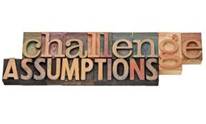 It was necessary to design a program that would empower teachers to question their own beliefs about their role, their abilities, their own perceptions and assumptions. The ‘Challenging Teachers’ Cultural Thinking’ professional development program inspires teachers to become social agents and appreciate the role they play in this diversity test. It is meant to instil the belief that the lead up to change may take a long time but change itself happens in seconds.
It was necessary to design a program that would empower teachers to question their own beliefs about their role, their abilities, their own perceptions and assumptions. The ‘Challenging Teachers’ Cultural Thinking’ professional development program inspires teachers to become social agents and appreciate the role they play in this diversity test. It is meant to instil the belief that the lead up to change may take a long time but change itself happens in seconds.
When we open our minds and stretch them beyond the comfort zone of identity beliefs, change can happen. In this conflict between long held beliefs and the introduction of new beliefs, magic happens.
To be living proof of what I was trying to teach, it was necessary for me to model it rather than tell them about it. So that is what I did.
The mediocre teacher tells. The good teacher explains. The superior teacher demonstrates. The great teacher inspires.
William Arthur Ward
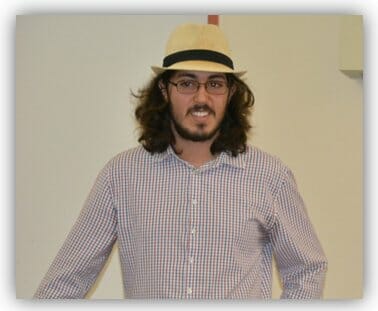 It was a weekend workshop and I stood in front of a huge crowd of teachers, wearing my poncho. Escorting me was a young man with a beard, glasses, a hat and a small tattoo on his arm. Without introducing ourselves and after the acknowledgment for the Traditional Owners of the land, we asked them to guess where we were born. Many hands went up. Most people guessed I was from ‘Mexico’, ‘Nepal’, ‘South America’, ‘Spain’ and one woman quietly said, ‘India’. The guesses about the young man were ‘Greece’, ‘Europe’ and ‘Australia’.
It was a weekend workshop and I stood in front of a huge crowd of teachers, wearing my poncho. Escorting me was a young man with a beard, glasses, a hat and a small tattoo on his arm. Without introducing ourselves and after the acknowledgment for the Traditional Owners of the land, we asked them to guess where we were born. Many hands went up. Most people guessed I was from ‘Mexico’, ‘Nepal’, ‘South America’, ‘Spain’ and one woman quietly said, ‘India’. The guesses about the young man were ‘Greece’, ‘Europe’ and ‘Australia’.
We shortly introduced ourselves ‘I am Ronit, I am an educator, author and a life coach specialising in emotional intelligence.’ The young man introduced himself as well, ‘My name is Tsoof. I am a musician and teach in primary school.’ We directed them to a puzzle page in their workbook and asked them to guess as many things as they could about us.
On our PowerPoint we suggested they try guessing our ages, family status, whether we have children or not, and if so, how many. We also asked them to guess our places of birth, languages, religion, hobbies, cultural background and level of education and sexual orientation. Tsoof added, ‘Feel free to guess about my sexual orientation, I am very comfortable about it.’
It was very engaging experience. I loved the practical activities and would have loved to have even a longer session. The presenters were very entertaining and very passionate about what they do.
Mikayla Guinar, Global Education Project South Australia, Year of the Farmer Annual Conference
As we expected, some of them protested, claiming they have no assumptions. This was incongruous given that they did not protest when we asked them to guess our places of birth. I explained that the activity was not to check if they are good ‘guessers’ but to facilitate a thinking process. Tsoof reassured them they would get to know us during the session and would get a chance to ask questions to examine whether their puzzle is right.
It seemed to ease their worries and we asked them to share their guesses with the audience. Here is what they guessed: I was somewhere between 39 and 42 years old, from Mexico or a place in South America, speak Spanish, divorced, no children or 3 children and an atheist. Tsoof was from Europe, or more particularly Greece, aged 28 to 38 years old, gay, in a relationship, with a degree and speaks English only. For the time being, we left the guesses to hang in the air.
We went over some research about children’s attitudes and misconceptions about look, skin colour, name, religion, clothes, accent, language, place of birth and accessories. It was important for teachers to realise that we all make assumptions. My poncho was a great demonstration of the way we use partial information and create a story that is based on pieces of the puzzle that stand out. I asked the audience to raise their hand if they thought I was from a Spanish-speaking country. Over 90% of hands went up. People also admitted that their next thought was, ‘What religion are Mexicans?’ Many people laughed when I told them about my trip to Mexico and how, over the years, this poncho became a very effective prop in my diversity programs.
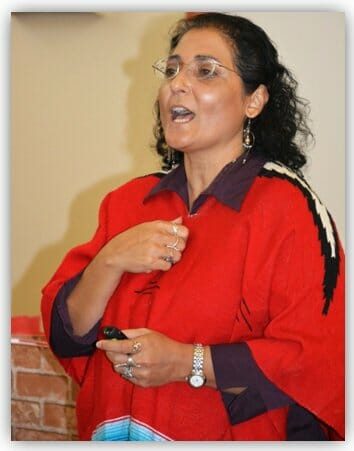 Thousands of audience members, young and old, educated or not, migrants and locals, without fail, assumed that wearing this poncho indicated my place of birth. When I took the poncho off and asked them to guess again, there were more ‘Indian’ and ‘Sri Lankan’ guesses. I explained that both my parents were from Iran.
Thousands of audience members, young and old, educated or not, migrants and locals, without fail, assumed that wearing this poncho indicated my place of birth. When I took the poncho off and asked them to guess again, there were more ‘Indian’ and ‘Sri Lankan’ guesses. I explained that both my parents were from Iran.
We had a heated and lively discussion about the implication of assuming someone is from Mexico or that they speak another language. We came to the conclusion that though assumptions about a poncho may not be very harmful, it could and does in many cases change the tone and speed of language, assuming the ‘poncho’ person’s proficiency in English is low.
In a following activity, we asked teachers to look at a set of photos of people and guess things about them based only on what they saw in the photos. Each photo represented a typical stereotype and allowed us to discuss misconception created by a single assumption that leads to other assumptions. Much like my poncho, which led people to assume I was Mexican, which then led them to assume I spoke Spanish, and therefore assume I have the faith of people who live in South America, the photos were chosen to allow the audience to question their own assumptions.
We often hold stereotypical beliefs that we don’t even know we have, until we are ‘forced’ to bring them up to the surface and question their validity. The activity gave teachers an opportunity to examine their own subconscious beliefs and an opportunity to discuss the possible positive and negative implications of such assumptions about: dark skin colour and being a criminal, attitude to physical appearance, age, level of education, profession or hobbies, religion, political affiliations, hobbies and the ‘pretty and stupid’ stereotype.
Today’s experience gave me more awareness into today’s society, and how we perceive others. It gave me a different perspective on different cultures. It challenges my assumptions by teaching me that it is wrong to make judgment on people.
Both presenters were very informative and fun and answered all our questions.
Brenda Rush, Dalby day Nursery, Goondiwindi
The guesses in this session were very similar to the thousands of others who have taken part in this activity over the years. In response to a photo of a young man with long hair, the guesses were ’28 years old, gay, musician, speaks English only and finished only 12 years of schooling’. Though the age and level of education changed from time to time, the ‘long-haired, gay musician’ was a typical stereotype that was very common.
Teachers were shocked to recognise that they had stereotypical assumptions when they found out it was a photo of 35 year-old Professor Gil’ad Zukerman, a linguist and university lecturer, married with 2 children who speaks 18 languages and his only connection to music is his love for opera. One teacher asked me ‘How did you expect us to know that?’ and another teacher answered ‘She didn’t, but you still guessed.’ It was at that moment that I knew some minds had opened.
No one expects us to know, but in every interaction, we still guess. We play this guessing game with our minds and weave stories, just as Gladwell talked about. The only thing is it gets risky when we start believing our stories to be true. In the diversity test, it can be the difference between getting a top mark and failing. Getting an ‘A’ would be acknowledging the difference and finding beauty in the variety and an ‘F’ would result in fear, xenophobia and conflict.
After this activity, teachers started sharing personal stories of wrong assumptions others had about them. Most stories were about assumptions that were an obstacle in their communications.
The theory behind the activity and the reflection about it was to allow teachers to understand that many of our beliefs are developed in a ‘blink’—in no time at all. We collect these beliefs through our upbringing, stories, media, events in lives and even a single personal experience that planted a seed of a belief in our mind that later fulfils itself. If we want to help our students overcome some of their beliefs by questioning them, we must start by recognising and questioning our own.
In the following half hour we covered the challenges of living with diversity, the science of empathy, the power of storytelling when addressing ethics and values, the do’s and don’ts of effective diversity education, how to address differences of beliefs and culture, strategies for dealing with personal, cultural, political and social conflict successfully and effectively and the most practical ways to celebrate diversity.
It was the last half hour of the session and we reached one of the most important parts of the session. The audience had a chance to examine each of their assumptions from the original ‘puzzle’ activity at the beginning of the session.
Tsoof said, ‘By the way, I am Australian.’
‘Were you born in Australia?’ was the first question with Tsoof answering, ‘No, I was born in California.’
‘Are your parents American?’ someone asked and he said, ‘No, my parents are not Americans.’
‘Does it mean you have two citizenships?’ someone asked and he replied in the negative.
 We took it slowly. Every answer added a piece to the puzzle. Every question had a presupposition. When we reached the language question, Tsoof explained that he speaks two languages. One teacher asked, ‘Do you consider American English and Australian language as two languages?’
We took it slowly. Every answer added a piece to the puzzle. Every question had a presupposition. When we reached the language question, Tsoof explained that he speaks two languages. One teacher asked, ‘Do you consider American English and Australian language as two languages?’
Her question revealed that the knowledge about the American and Australian citizenship tunnelled her to the assumptions that he speaks only English.
‘Did you come to Australia from California?’ someone asked.
‘No,’ he replied ‘I came to Australia from Singapore.’
Loud and confused voices rose up from the audience.
‘Are your parents Asians?’ someone inquired.
‘No, but we love Asian food from the years we lived in Thailand,’ he said. If Singapore was confusing, Thailand messed up the whole puzzle.
When we reached the age question Tsoof offered, ‘I will give you a clue, I am in my third year at uni doing my degree.’
One teacher asked whether it was his first or second degree. When I asked her to share her thought process and tell us what led her to ask the question she said ‘I estimate he is about 32 years old and it is very unusual for a 32 year-old to do his first degree.’
It was a great example of the process of assumption. Every presentation, without fail, will present an opportunity to witness this thinking process. We have partial information and we use one significant part of the puzzle and add pieces to it that support our original assumption. When Tsoof said to her, ‘It is my first degree,’ many of the age guesses dropped immediately to the mid-20’s. When Tsoof told them he was ’18 years of age’ there were many loud and surprised voices around the room.
‘Are you doing a high school course at uni?’ someone asked.
‘Didn’t you say you were teaching at primary school?’ someone challenged.
‘I do teach at a primary school. I have been teaching a group of year 7 students body percussion over the last two years. I also co-facilitate the leadership camps for students.’
‘Did you finish your high school in Australia?’ someone ventured.
It was clear that the knowledge about American citizenship, mixed with Singapore and Thailand was very misleading. Still, they had to find a way to make sense of the fact that he was 18 years old and in his third year of university. Another person asked if he studied in a ‘real university’. Their stereotype of age was challenged. We talked about our assumptions about young people’s attitudes and experiences. The tattoo on his hand didn’t help people’s assumptions.
It was an excellent PD. I liked the guessing game. Wow, it challenged all of my thinking and blew my mind.
Gaye O’rourke , Goondiwindi & District family day care
We have already discovered that long hair = musician and gay. Since Tsoof has long hair, many people guessed he was gay. One teacher said ‘I think you are gay but it is not a problem if you are.’ We didn’t answer. Another teacher told her, ‘Yes, but others might think it is a problem for them.’ Tsoof did not answer. There was some lively conversation among the teachers. One asked him ‘Are you gay?’ and another one asked ‘Why do you need to know?’ The room went quiet.
Eventually, with every question, Tsoof revealed every piece of their puzzle. He is 18 years old, with three citizenships, not gay, likes girls and not in a relationship. He studies at a ‘real university’ at the Conservatorium of Music at Griffith University, in a full-time program and in his third year. He teaches at a primary school, was born in California. Lived in Thailand, lived in Singapore, moved to Australia at the age of four. He speaks two languages, likes playing basketball, plays percussion and the tattoo on his hand was a fake to help the discussion about attitude and assumptions.
It was five minutes before the end of the session when someone from the audience called out to me and said, ‘We didn’t get a chance to ask you questions. I guessed you had three children. Can you tell us about yourself?’
The whole hour and a half was a constant stretch of the mind for the audience. It was my opportunity to show them that some ‘changes take a long time’ but, once realised, can occur in an instant. I only needed two minutes to bring about such change.
‘I was born in Israel and speak Hebrew and English. I want to thank all those who assumed I was 39. Thank you for flattering me with the young age assumption—I am actually 50 years old. I’m married and have been in the same relationship for 34 years. We are a very international family. My parents were born in Iran. My husbands’ parents are from Poland and Brazil. I have three children, each born in a different place in the world. My daughter is 25 years old, she was born in Israel. My son is 18 years old and he was born in California and my youngest is 13 years old and was born in Australia.’
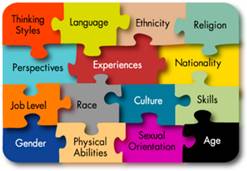 I’d barely finished adding the pieces to the puzzle about me when the room erupted in loud exclamations, including: ‘No way! What?’, ‘What did she say?’ and ‘You’re joking.’ I wasn’t joking.
I’d barely finished adding the pieces to the puzzle about me when the room erupted in loud exclamations, including: ‘No way! What?’, ‘What did she say?’ and ‘You’re joking.’ I wasn’t joking.
Slowly the room turned quiet. There is magic in that moment. The difference between one workshop and another is how far into the session the audience discovers the relationship between Tsoof and me.
‘But you don’t look similar,’ one of them told us. Some people laughed. Their laughs were the realisation of everything we wanted them to experience. Change can happen in one second—when they connected the dots, when they have to admit they had assumptions that cluttered their perception of us. Many claimed not to have assumptions about others at the beginning of the session, but they could no longer hide behind their ‘open-mindedness’ now.
We gave them feedback and reflection forms to fill out and asked some brave teachers to come on stage. All teachers who came on stage admitted they didn’t believe they had assumptions and stereotypical thoughts in the beginning, and that they now knew that change can happen in a very short time. One of them said, ‘If I can give my students the opportunity to experience what I have experienced here. I will be able to make a huge difference.’
On the reflection page, were many comments about how ‘thought provoking’ the workshop was. This is what people said:
- The photo activity was meaningful for me to realise we all have assumptions and stereotypes.
- I am proud to be a teacher and I know that I need to walk the talk.
- I thought I was open minded…
- Thank you for giving me the opportunity to examine my beliefs.
We stood in the hall two hours after the session finished with a long queue of teachers who wanted to thank us personally. A group of teachers said they drove four hours to get to the session and wrote on their form, ‘It was worth the four-hour drive this morning’. Some told us that they went over the whole presentation in their minds trying to find any clues about the relationship between us.
It was very interesting and reflective. I loved the engagement with the audience. I realised the importance of not making assumptions. It was challenging to guess but this made m realize that we are wrong to judge people. The presenters were very entreating and has the ability to captivate a large audience.
Thushari Lammas , Dalby Day Nursery, Goondiwindi
‘Do you call your mum ‘Ronit’?’ one of them asked Tsoof.
‘No’ he replied, ‘I call her mum. Calling her Ronit was one of the hardest things.’
We shared a story with them about a similar experience we had at a leadership camp we ran three weeks prior with about 30 year 7 students from five different schools. Even though we had the same last name on all the forms, they didn’t realise we were related. They even received an assignment to gather as much information as they could about every student and teacher in camp. Half of them did not connect the dots about our relationship until the end of camp.
Many of the teachers still had many questions so they could collect all the pieces of their puzzle about us. Every question we answered peeled another layer of the subconscious assumptions they had and changed the story about us. We were happy to answer any question.
Change can happen in one second of realisation: although we think of ourselves as open-minded, every story we create is not whole. The only way to really get to know people is not to read or learn about them but to get to know them personally, ask questions and spend time together. I could read all there is to know about Egyptian teens and their families but magic happens when we are brave enough to question and reflect on our beliefs and assumptions and give space to new, accepting, respecting and appreciating belief that we have more similarities than differences.
To pass the diversity test, we need to realise that misconceptions, assumptions and stereotypes are the sources of cultural conflicts. We need to realise that educators hold the key to instilling positive values and beliefs about diversity, and to facilitate the desired social change. Only when teachers are able to question and reflect on their own assumptions they will be able to be role models, be able to make a stand against discrimination and become social change agents.
We packed our gear and headed home with a strong belief that we had helped another group of teachers make a mind shift, stretch, open their minds and become aware of the role they play in the passing or failing of the diversity test. We read the feedback forms on the way home and knew that the army of peace and harmony is the army of teachers that will change the way we treat ourselves and others and will help us accept, appreciate and celebrate diversity. And the army just got bigger.
Celebrate Diversity!
Ronit
References
- Gladwell, M. (2005). Blink: The power of thinking without thinking. New York: Back Bay Books/Little, Brown and Company.
- Rosenthal R & Jacobson L. (1968). Pygmalion in the classroom: Teacher expectation and pupils’ intellectual development. New York: Holt, Rinehart & Winston.
About Ronit Baras
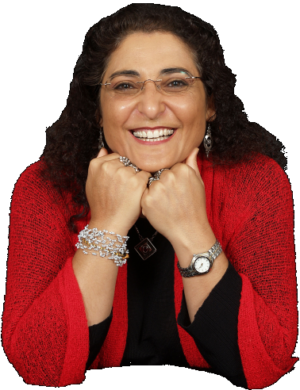 Ronit is an educator, life coach, author, journalist and justice of peace. She is an international speaker & presenter and has been writing, coaching and teaching emotional intelligence techniques for 38 years.
Ronit is an educator, life coach, author, journalist and justice of peace. She is an international speaker & presenter and has been writing, coaching and teaching emotional intelligence techniques for 38 years.
Ronit has developed a range of workshops, presentations, and special programs specialising in emotional intelligence to enhance academic, social and cultural excellence. Her programs have been hugely successful and have touched the lives of millions of people around the world.
Ronit is the founder of Be Happy in LIFE currently teaching at the University of Queensland and training for the Institute of Public Administrators (IPAA) Queensland. She is the State director of the Together for Humanity Foundation and was the Global Citizenship School program director. Ronit is deeply involved in diversity education, running many workshops and professional development sessions on language, global citizenship and social justice for students, parents, teachers, corporate & government employees and members of community organisations.
Her motivational presentation, books and articles send a message of inspiration, acceptance, harmony and happiness.
In the last 16 years alone, she ran workshop, training days, was a keynote speaker and presented to tens of thousands of people.
For her community work, she was nominated twice for the Australian of the year and for the international women peace award by the women federation for world peace.
More school coaching programs for teachers’ professional development
 Guessing game
Guessing game
